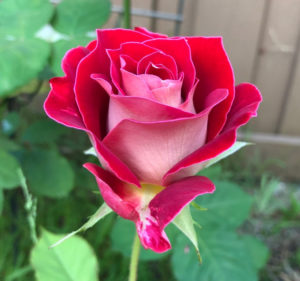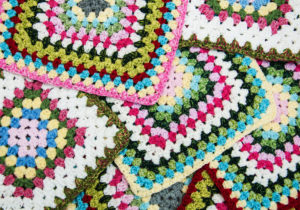Janet Dawson
Writing is Like Making a Garden Grow
 Writing a book is like gardening. Case in point, my patio. I started out with dirt, created a framework of raised beds, then added containers. How does my garden grow? Roses, succulents, clematis, lilac, abutilon, dahlias. And tomatoes. Always tomatoes.
Writing a book is like gardening. Case in point, my patio. I started out with dirt, created a framework of raised beds, then added containers. How does my garden grow? Roses, succulents, clematis, lilac, abutilon, dahlias. And tomatoes. Always tomatoes.
I have a condo and a patio, rather than a house and a backyard. Buildings and a fence block the sun at various times of the day. The roses do well. Other plants don’t. My record with dahlias is mixed. I’ve never been able to grow sweet peas. Or cucumbers. Cucumbers like hot and sunny. I have sun, but it doesn’t get hot here in my microclimate, so close to San Francisco Bay.
My glorious cymbidium orchids thrive on benign neglect and water. My tomatoes do well in containers on wheels, so I can move them to the sunny spots. Of course, critters like tomatoes as much as I do. In years past, I’ve lost many tomatoes to critters.
What has all of this got to do with writing?
I start with ideas and lots of plans, working within the limits I have. The amount of space I have in my garden is similar to the frameworks dictated by such things as the standard length of a novel and the rules or conventions of the genre. A crime novel has a crime, usually murder. And it’s usually about 80,000 words, give or take.
I make decisions about my project, both at the start and all through the writing process. Will my protagonist be roses, tomatoes, or succulents? A yellow rose next to another yellow rose? Or contrast the colors by planting a red one instead?
Maybe that character is too big for this novel and needs another plot, rather like a succulent that gets too big for the space and needs to be transplanted. Or maybe the plot is too big for the framework, as happened when one of my short stories decided it wanted to be a novel.
Will this novel be in first person or third? If it’s third, will the viewpoint be limited to that of the protagonist, or will it be multiple or omniscient?
It takes a lot of digging to plant a garden. Whether I’m writing about the present day or the past, I have research to do, digging in the dirt, so to speak, unearthing information. Or getting rid of weeds down to the roots.
Weeding is an essential part of gardening. So is pruning. Weeds can get in the way of the plants—and the plot. So, I eliminate the extraneous character and the subplot that isn’t working. As for pruning, cutting back the words that aren’t working in a scene or a paragraph can make for a stronger narrative. And make the characters stronger as well, just like pinching back early blooms on a tomato vine can make the plant more vigorous.
Writing a book means typing “The End” at the finish. The project has its season, just like a garden. And then I start over, with the next season, an idea full of possibilities.
D. Z. Church
Writing is Like an Afghan Throw

Have you ever found the bag of yarn for an afghan you planned to knit/crochet during the winter months but not the instructions? That’s what it’s like to write a book. Every single time you open the bag it is full of tangled skeins of possibilities, different yarns, weights of yarn, and colors waiting to be knitted into a cohesive whole that matches a picture you’ve concocted in your head.
Add to the various yarns and colors, different sized knitting needles and crochet hooks, the use of which result in different size stitches, different thicknesses of fabric, different lengths and widths of the finished product that enrich and add depth to the design.
So, you pull out the yarn, decide on the main colors (characters), secondary colors (second bananas), and pattern (plot). You’re knitting this one, in twenty squares. You test the gauge of each yarn against the ruler, so you know how many stitches per square ensuring they will fit together.
Your design set, you wait a day, look at it again and realize square five needs to precede square four, and what the heck were you thinking on square eleven. You move things around a bit, then start. Square one measures the right size, it carries the right theme and color, so you move onto square two. About square five, you unravel square two because the pattern doesn’t add to the flow. As you knit, you revise the design, unraveling on occasion, recasting, and reknitting.
When you have all your squares done, you sew them together. And though you took utmost care with the colors, size, and pattern of each, it turns out, you need a new square sixteen to fill a hole in the pattern to foreshadow the red in the last four squares. Now, you have one too many squares. And square six needs more blue, seven more green, and ten through thirteen more white, then you notice that square nine muddles the whole pattern (what the heck is all that purple). You do the fixes, add square sixteen, remove square nine, and voila you have a gorgeous afghan.
You take it to your knitting club for review. The first reviewer asks why so much red, the next why so much green. They shake their heads at your explanation. Steaming, you take your afghan home, hang it on the wall, and stare at it for a few days. In the end, you unravel some red, leave the green, pull out square fifteen, add a new square with a tinge of purple and try again. Your reviewers love the changes.
You take a photo, write an ad, attach a price, and place it on Amazon. The first Amazon reviewer says it could have used some red in the square you took it from at your reviewer’s request, and what about that dropped stitch you missed? You snarl. Then start square four of your newest creation, purling instead of knitting.
You unravel and start over.

D. Z. Church
A Murderous Walking Tour of Monterey, California
We are starting a new feature this month that combines travel and mystery. A Place to Die For features a new location for mystery each month. We start with Monterey, California.
Monterey is beautiful, scenic, colorful, a great place to bike, to walk, to visit, to eat and to enjoy the ocean. It also offers a variety of settings for murderous plots. To date, I’ve only killed two people in the area and both deaths occurred miles south of Monterey, taking good advantage of the Big Sur redwoods. But are there places in Monterey equally as intriguing… well, here’s a brief walking tour of places to die for.
Anyone would put the Monterey Aquarium at the top of their list. Sharks. Kelp tanks. A walkway over a rocky beach. And tanks of jelly fish. So many possibilities. Imagine enjoying the otters as they play in their tank until a human face thumps against the tank wall. Or watching the fish cruising the massive kelp tank until you realize that one arm of a huge plant isn’t. Now, I don’t mean to spoil your trip, the Monterey Aquarium is magnificent and well worth a tour. The kids petting tank alone is worth the visit, and, of course, it is on Cannery Row, on the water, and surrounded by great eating joints. But if I wanted one of my heroes to find a body, I’m just saying…
Cannery Row is where fishermen took their sardine catches to be canned before the fish fled the Bay for one less deadly. A stroll along the wharf and its eateries shows the fishing industry is still strong. Plan on a boat tour of the Bay, just stay onboard. The bay is fickle and very, very deep. During squid season, bright lights float over the dark water, tumbling and righting with each wave like aliens arriving en mass. It is an eerie, exquisite sight and not to be missed. Except if you are a squid. The klieg-like lights attract squids who rise into nets. And it is dark out there, and nets can be lowered.
A walk on the Recreation Trail above the Aquarium delivers you to Lover’s Point in Pacific Grove. When you get to the rocks opposite a multi-gabled Bed and Breakfast, check out the water pounding the eroded boulder strewn shore, alive with ground squirrels. One might fall if one isn’t careful. Is that a body jammed between those rocks?
A bit further on, a jut of land defines the entrance to Monterey Bay. Resist wading out to it in low tide, it becomes a rocky windswept island as twenty-foot waves hurtle the tide ashore. The possibilities for a sudden demise are mind boggling.
It is a wonderful place to watch the tide come in, the sun set, and the dark settle … with feet firmly planted in the parking lot above the beach. Even so, there is enough cliff to do you damage. Should someone say, “Trust me, I know where to step,” don’t. Especially if you will be the first one over the cliff. Maybe I should write a book entitled, “Big Men Don’t Bounce.”
And I’m only halfway around the Bay.

